It’s a still, humid night, but the water before me bubbles with disturbance. Everywhere I look small fish – gizzard shad – skitter along the surface. They’re trying to escape hungry predators below. It’s hard to focus on rigging up my fishing rod.
I’m at The Nature Conservancy’s Emiquon Preserve along the Illinois River in central Illinois. Already I’ve seen waterfowl and wading birds galore, circling ospreys and blooming lotus flowers. I’ll be spending the next few days learning about the research and conservation conducted by the Conservancy at this world-class floodplain wetland. But minutes after my evening arrival, I’m going fishing.
Doug Blodgett, senior advisor, for The Nature Conservancy in Illinois, is almost apologetic as we head out. “The word is fishing on the preserve has been really slow this summer, so no guarantees,” he says.
After a long day of travel, I’m happy to have herons overhead. I tie on a Rapala, a balsa fishing lure that mimics an injured minnow, and begin fishing. I don’t have to wait long. Five casts later, a whirlpool engulfs my lure and I’m tight to a chunky largemouth bass.
It darts for the weedbed, but I reel and soon land the nice fish. I slip the hook and continue fishing. Two casts later, another nice bass is on my line.
“This is slow fishing?” I ask Doug with a laugh.
“At the peak, we had anglers catching 300 fish in a day,” he replies.
Crazy. But you know what’s even crazier? Twenty years ago, this paradise for bass and birds was a giant cornfield.
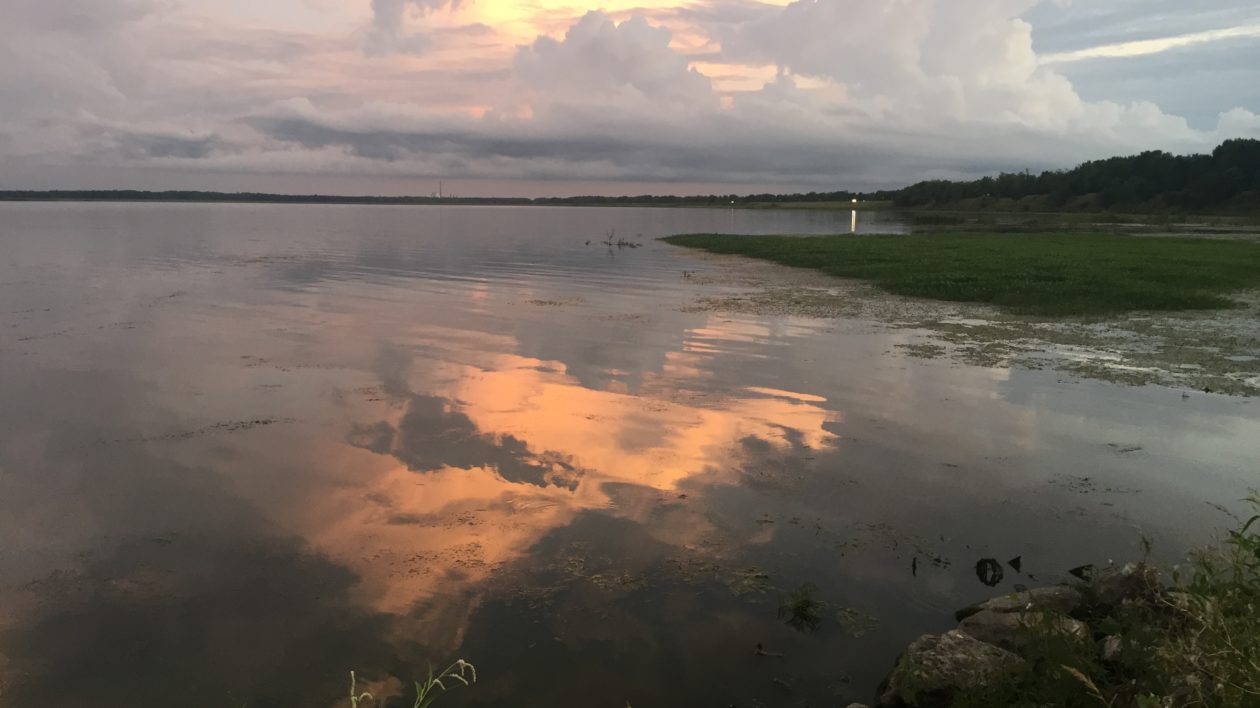
The Once and Future Bass
The area I’m casting may have one of the longest bass fishing histories on the continent. Until the early 1900s, this area was known as Thompson Lake, a floodplain wetland connected to the Illinois River. People lived along Thompson Lake for at least 12,000 years.
Floodplain wetlands provide ideal habitat for a wide diversity of wildlife, and those creatures provided food for the cultures living there. The Mississippi culture built religious and burial mounds on the bluffs, and archaeologists have found evidence of a rich fishing culture.
The Dickson Mounds Museum, adjacent to Emiquon Preserve, features an exhibition of bone fish hooks, weights for nets and arrows all used to harvest fish. Excavations have found plentiful largemouth bass bones, as well as those of channel catfish, bowfin, longnose gar and a diversity of other species.
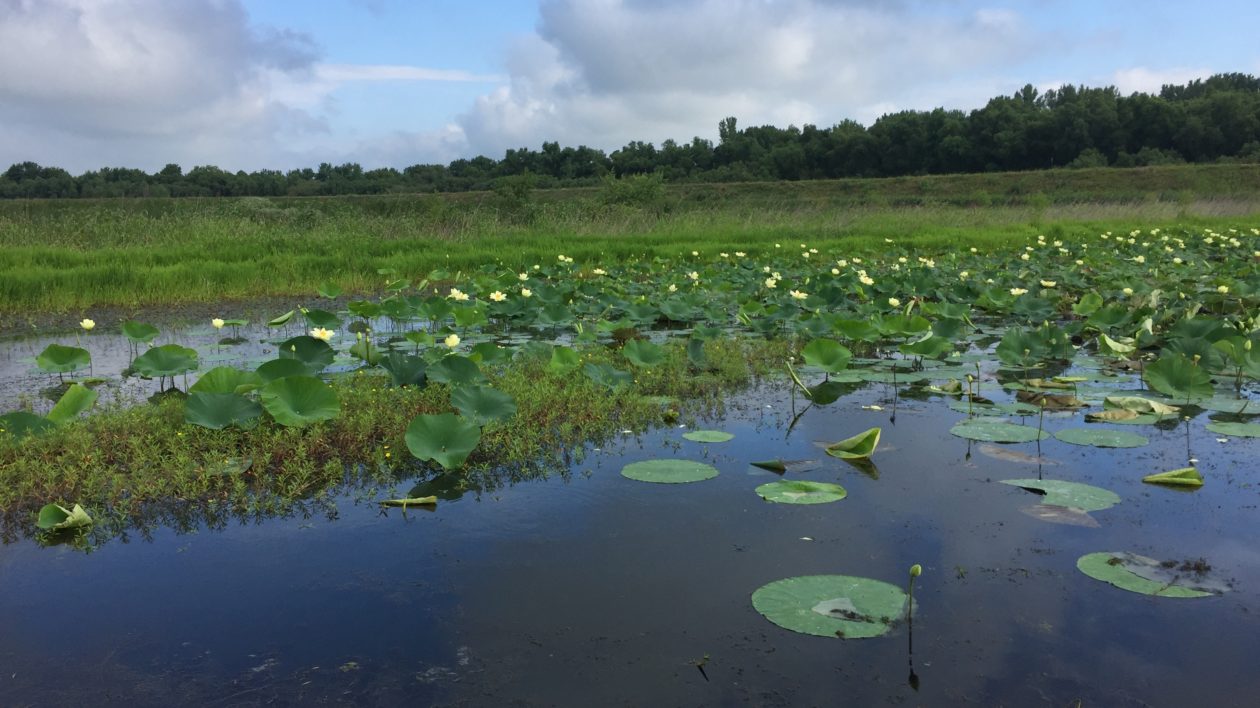
Thompson Lake remained a haven for fish through the centuries. In 1909, the Illinois River was the most productive commercial inland fishery in the United States. At that time, it was also a destination for hunters and anglers, who came for the abundant ducks and gamefish.
By 1930, half of the property was leveed, and soon the floodplain would be seemingly lost forever. The land was just deemed too valuable as farmland. “It went from an area of high diversity and high productivity to one of low diversity and high productivity,” says Blodgett.
Over time, it became difficult to imagine it as a wetland alive with the sounds of wild creatures. Instead, it became a large corporate farm, with cornfields stretching to the levees, farm buildings and a beef feedlot.
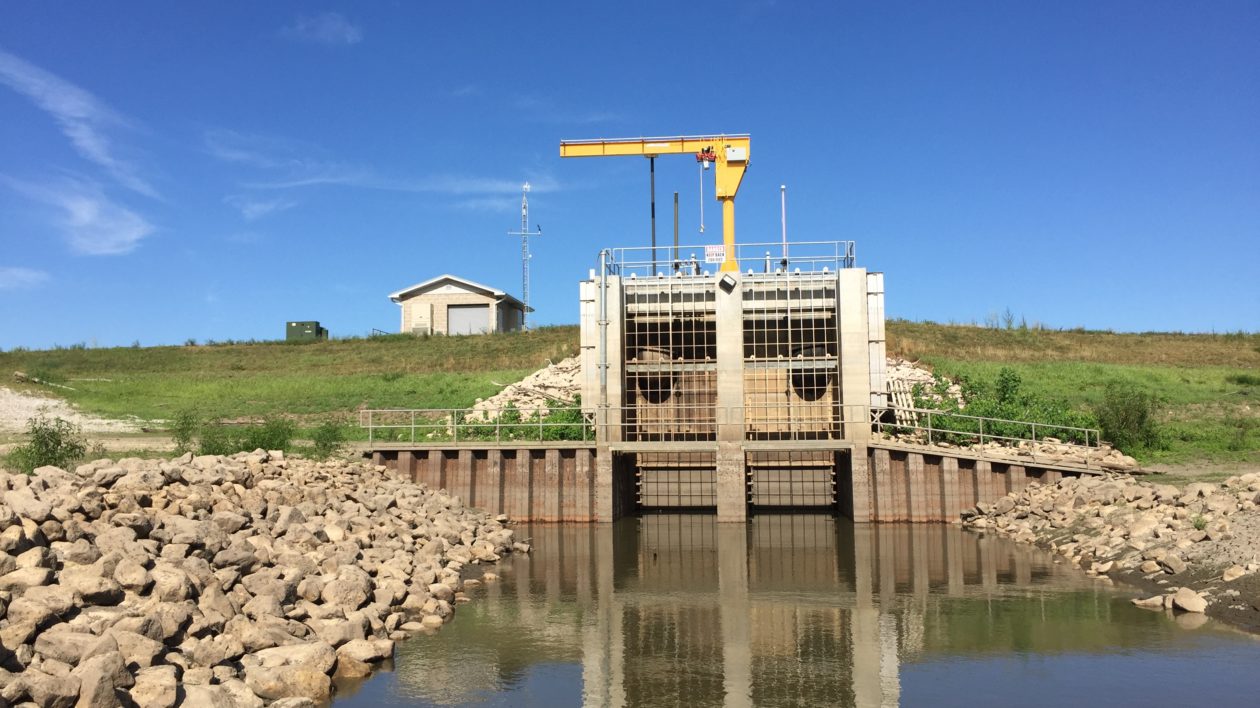
But this wasn’t the last chapter for Lake Thompson, not by a long shot. In 2000, The Nature Conservancy purchased the 7,800 farm and began, as Blodgett puts it, “putting Humpty Dumpty back together again.”
The Conservancy worked with a long list of research, conservation and community partners to consider every aspect of restoration. In 2007, a new chapter began at Emiquon as it was returned to a floodplain wetland.
One aspect of restoration was the reintroduction of native fish. Thirty-three native species were stocked, including more than 1.2 million largemouth bass fingerlings. Other fish included ancient species like bowfin and two species of gar, common gamefish like channel catfish and bluegill, and small, colorful species like darters. Twenty-two of the reintroduced species have been documented on the preserve during subsequent fish surveys. Additionally, 22 other species (all but five of them native) have also become established with no help from conservationists.
Largemouth bass were a native species and also of high interest to the local community and anglers. Within two years, it was clear the bass had grown phenomenally fast. Electrofishing by researchers turned up more than 100 bass per hour.
“Soon Emiquon had a reputation as one of the best bass fisheries in the state, if not the Midwest,” says Blodgett.
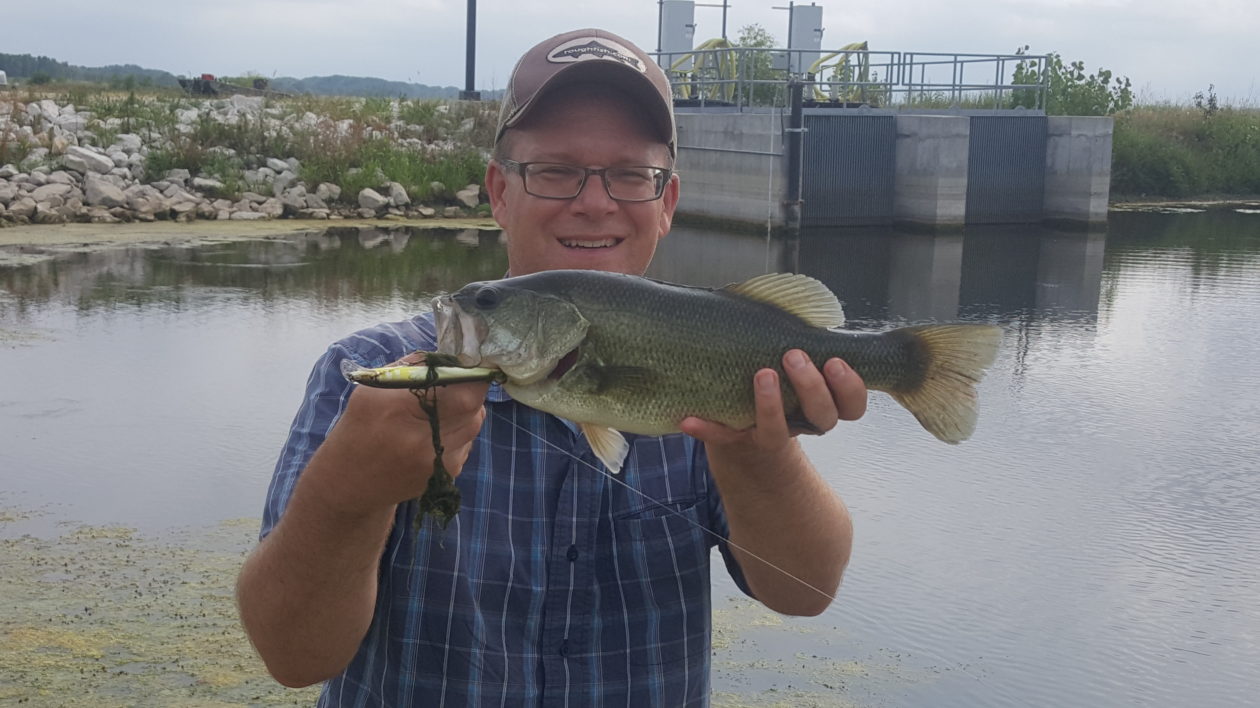
White Bass Frenzy
After fishing just a short time on Emiquon, this wasn’t difficult for me to see. I had landed a couple more bass, as well as several other strikes. And then the water in front of me appeared to be boiling. Small fish frantically darted across the surface as larger fish exploded all around.
“White bass are hunting the shad,” Blodgett says.
White bass are no relation to largemouth bass (which are actually a member of the sunfish family). The white bass hunt in schools, surrounding smaller shad and then feeding on them in a predatory frenzy.
I cast my lure into the center of the action and immediately felt a fish hammer it. I lifted up and had a fat white bass on the end of my line. After a quick photo, I released it and cast again. Another fish immediately was on. The school then moved on.
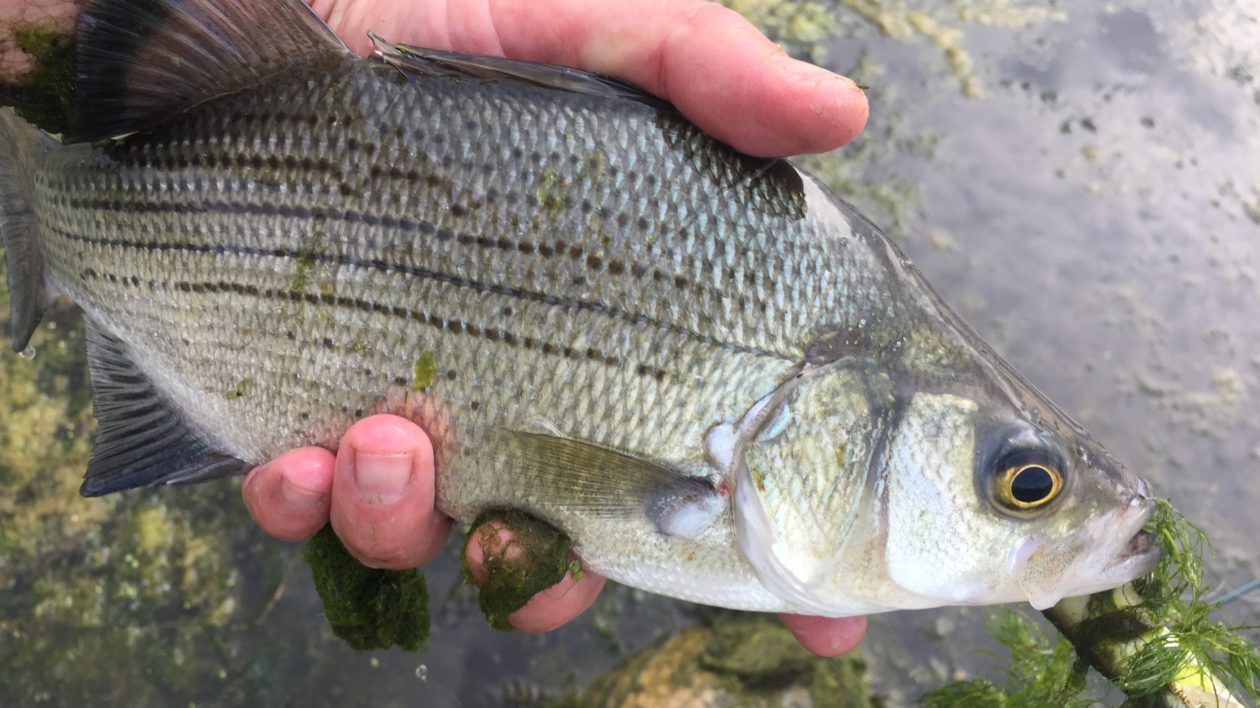
As white bass fishing on Emiquon goes, this is a slow day. Many anglers visit to fill their freezers with fish. This is in no small part due to how water is managed at the preserve.
When restoration began at Emiquon, some believe that the Conservancy should let nature take its course and just let the Illinois River flow into the wetland. The problem was, since the days of Thompson Lake, the Illinois River had been irrevocably altered. It carried silt and pollutants, as well as astonishing populations of invasive silver and bighead carp.
The Conservancy made the decision to install a state-of-the-art water control structure that would allow managers to mimic the cycles of a “natural” wetland. Water levels could be controlled so that dry and wet cycles would allow native vegetation – and the wildlife that depends on it – to flourish.
When water levels are dropped at the preserve, the gizzard shad also move with it. These forage fish swim out into the Illinois River, where predators wait to gorge on the bounty. “In one 30-minute period, we counted 123,000 fish, most of them shad, moving from the preserve to the river,” says Blodgett. “And the white bass in the river just hammer them.”
And anglers also take advantage of the bounty, catching enough white bass to provide plentiful summer meals.
While largemouth and white bass might get most of the attention, anglers encounter many other bass. The yellow bass, similar to white bass, sometimes strike small lures. I caught my first one at Emiquon. Bowfin, an ancient fish with a savage strike, thrive in the grassy margins.
I was not fishing for my freezer, just to experience the preserve. And just seeing predators like white bass in action – and to briefly connect to them with my fishing lure – was more than enough for me.
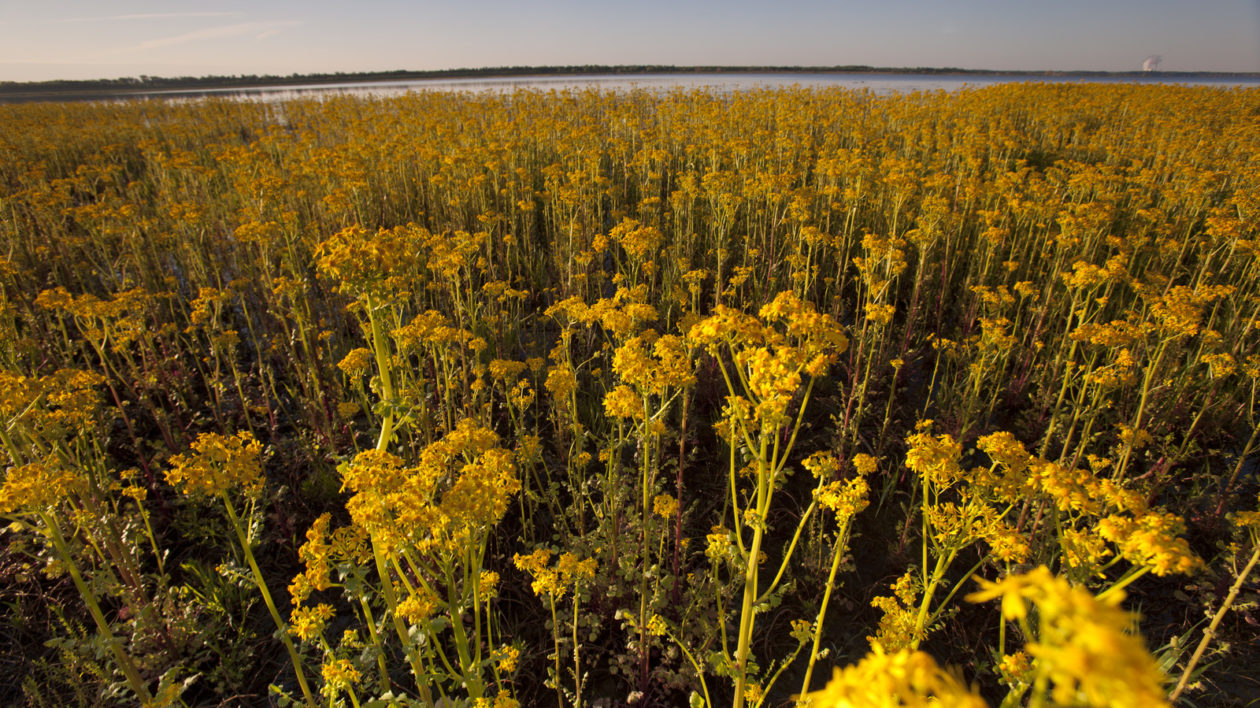
Customer Service
Emiquon Preserve was not, of course, established for bass fishing. “I consider the ecosystem to be the customer I’m serving,” says Blodgett. “It’s why I’m here. But from the very beginning, we knew that this preserve would be very important to people for a number of reasons. We planned for a variety of educational and recreational opportunities for people to enjoy and learn about this special place.”
Providing fishing opportunities was part of the plan. Visitors must pick up a free permit at the nearby Dickson Mounds Museum. They can only use boats that use electric motors or are human powered, creating a quieter, less intrusive experience. About 1,200 to 1,600 anglers a year obtain a permit.
Fishing is just one use of the preserve. There is a 2-mile walking loop with interpretive signs, plus a canoe launch. There is public waterfowl hunting. The area is popular for birding, and the Conservancy hosts many educational tours and volunteer opportunities each year.
“People have been a part of this floodplain wetland for thousands of years,” says Blodgett. “We knew that the conservation we did here had to benefit people. Recreation is one part of that.”
Of course, recreation can bring its own challenges. An angler who catches 100 bass in an outing has raised expectations. If fishing is slow, preserve staff hear concerns that the fishery is in decline.
“Emiquon is a dynamic system,” says Blodgett. “It changes from year to year. The vegetation and water levels change. That can also change where the fish are.”
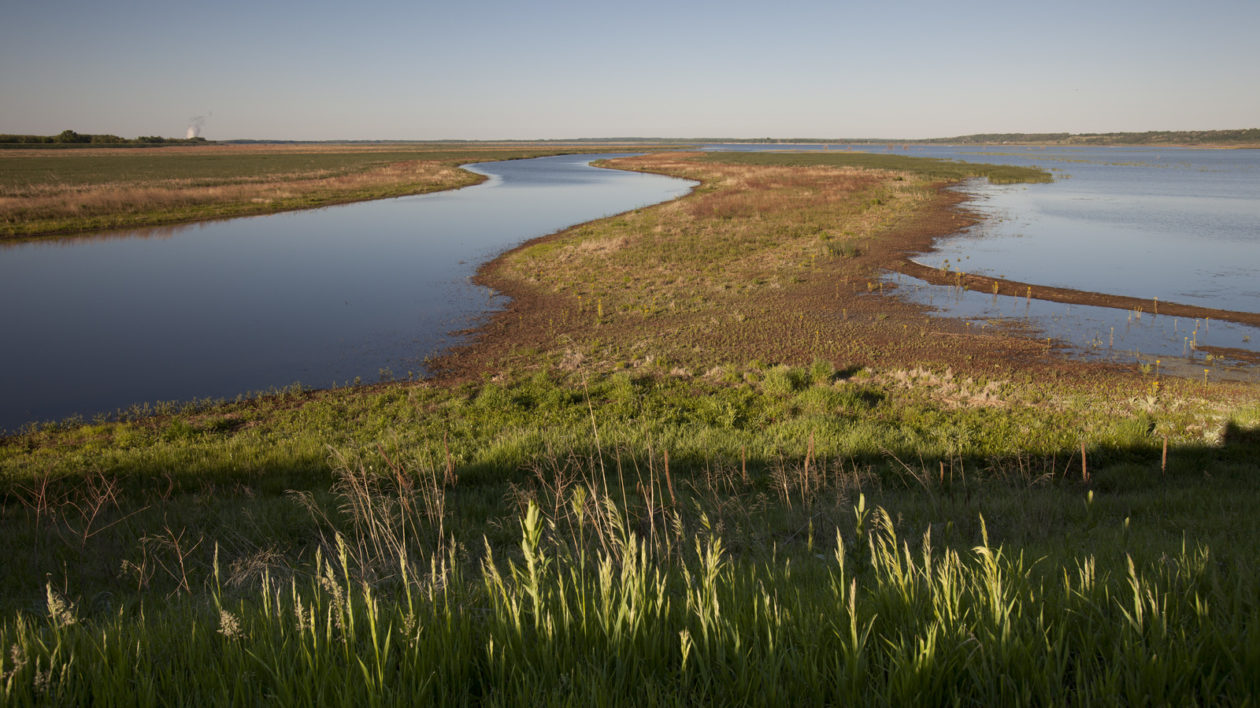
An Emiquon Evening
I continue tossing out my imitation of an injured minnow, and land another largemouth and another white bass. Despite being tired and hungry from a day on the road, I know I could stay here all night. This kind of bass fishing is one of the simplest outdoor pursuits, just you, the fishing rod and the fish. Perfect summer fun.
I know bass fishing is just a small part of Emiquon Preserve. Floodplain wetlands provide so many benefits, from storing flood waters to improving water quality, from sequestering carbon to providing habitat for a diversity of birds. It’s a place to experiment, to see how a seemingly lost habitat can be put back together. And a place where conservationists can monitor the many benefits that wetlands provide.
But chasing bass brings me into the heart of this place. As I cast, an osprey dive bombs a great blue heron that got too close to its nest. Dragonflies dart overhead. Frogs begin to fill the evening with their chorus.
I cast my lure one more time into the clear water, as people have done here for thousands of years. Cast again into this wetland paradise, once lost, but now back again.
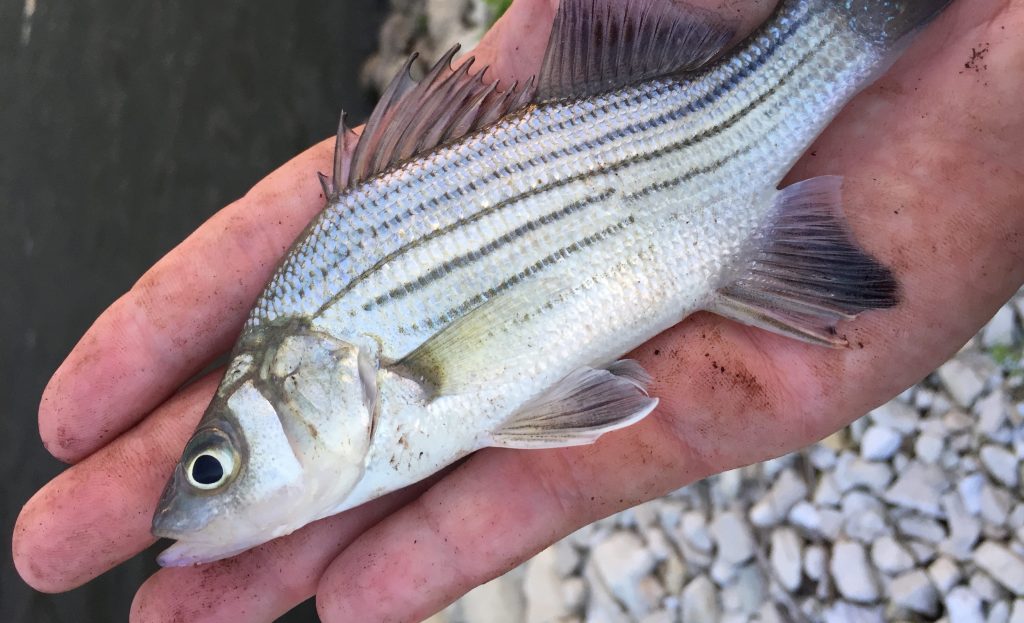



It has been a pleasure to see the dream of Michael and others come true from its time as a site for raising and holding livestock.
The story of Emiquon is really amazing. It has a good documentary to see:
https://www.wtvp.org/local-programs/emiquon/#:~:text=WTVP%20presents%20a%20cinematic%201%2F2%20hour%20production%20of,and%20cattle%20are%20now%20restored%20to%20natural%20habitats.
I did not fish emiquon last year. I was told fishing was not good. Will fishing be any good in 2020.
It’s hard to predict fishing conditions and fish. The experience in the blog occurred this year, and I thought the fishing was pretty great (although I only fished a short period of time).
Kudos for the NC to have the foresight and ability to bring the area back. The high production of bass, etc. likely will level off at some point, but I’d like to be catching those bass , having been a bass angler since I caught my first one as a youngster and ran all the way back home yelling “I caught a bass!!!!” It was all of 4″ but it was a BASS! Nothing has changed. Only got one yesterday but got 5 the day before.
Great article about another fantastic project completed by the Nature Conservancy. Please do a project like this in NJ or FL were I reside. If there is already an area like this in these two states please let me know.
We thank you for bringing up this experience to our attention today.These are times of reviewing and revivals of water forests which we always relied upon perhaps in more recent times we became a nonchalant humanity from conservations of these gems around us.We find hope in your work as does our earth.
What was accomplished here can be done elsewhere to improve habitat for a variety of species. There are a number of places just itching to be restored to their former selves. Great work TNC!
Matt, I enjoyed your telling of Emiquon’s story. We visited Dixon Mounds museum a few years ago and took the opportunity to get a view of Emiquon that summer’s day. I’d like to visit it again during autumn.
Awesome story. So glad areas like this have been restored and are thriving with wildlife. Keep up the good work as there are many other areas that can benefit from the Nature Conservancy.
Wow. Very impressed, must be very satisfying for those who have worked on this project.
TNC always excites me with new projects and great stories.